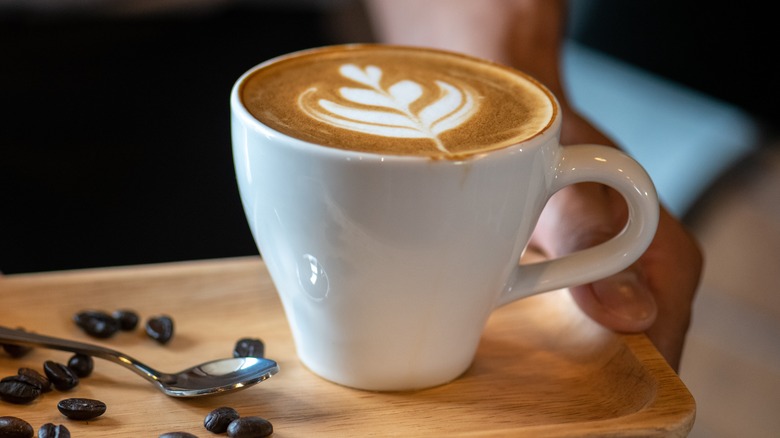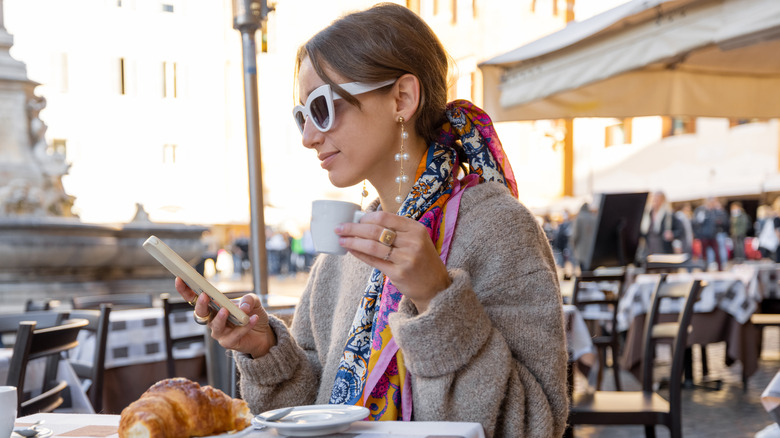The Cheapest Way To Order Coffee In Italy Might Surprise Tourists
It's no surprise that Italy — the country that invented espresso — can credit coffee as a major part of its economy. How large? Well, according to Statista, Italy's coffee scene has pulled in $15.60 billion in revenue in 2025 so far. Slow Italy reports that, in cities like Trieste, residents consume 10 kilograms of coffee beans annually, making it one of the world's most coffee-obsessed destinations. While inflation has pushed up the price of household items and increased the value of €1 ($1.17) by around 70% since 2000, espresso prices have stayed remarkably stable. Statista also reports the average price of a cup of coffee in Italy is around €1.50 as of December 2024, though some cities still charge even less than that. Still, many tourists pay much, much more than that amount for the same cup, simply because they're missing a simple trick that could save them a lot on their Italian adventure.
The key is an old Italian habit: Stand at the bar instead of sitting down at a table. Tourists who stand pay the normal local price. Those who sit get hit with much higher bills. This price differential, known as "al banco" — which translates to "at the bar" — versus "al tavolo" ("at the table"), fits Italy's quick coffee culture: Locals usually drink their espresso in around 30 seconds before continuing with their day.
Why bar service costs less than table service
Old rules still shape cafés today. A few years before World War I, the government instated a legal maximum on the price of coffee. Since this meant restaurants and cafés could only charge so much for coffee itself, they began charging customers for the labor needed to serve coffee to make up for lost revenue.
Labor costs drive much of the gap. According to the Bank of Italy, Italy's labor productivity grew by just 0.25% per year between 2000 and 2022. That was the weakest pace in the eurozone. This chronic productivity gap informs why so many restaurant chains are struggling to stay profitable. Low output means higher labor costs. So, cafés charge more for table service. Seated guests may need waitstaff to take orders and clear tables but standing patrons don't.
Then, there are extra charges. Many spots slip in a coperto — or "cover charge" — of a few euros per person. Tourist-heavy cafés also impose a servizio — or "service charge" — of approximately 10% to 20% of the total bill. All that can quickly turn a €1.20 standing espresso into a €4 to €5 seated one. And the hike in price can be even bigger than that: At Caffè Florian in Venice, a €6 cappuccino at the counter leaps to €12 at your table.
Easy ways tourists can sip and save like locals
Mastering the local way to order coffee can slash your costs significantly and help you dodge common money mistakes while you travel. Walk up to the bar and say "Un caffè, per favore" for an espresso – that means, "A coffee, please." Stand at the counter, drink it fast, then pay at the register. Usually, you drink first and pay later at the counter. But at a table, they might bring the bill, take payment right away, or write it down for you to settle at the till.
Timing your coffee orders strategically is another way to avoid tourist prices and weird looks. If you order a cappuccino past 11 a.m., locals will know right away you're a visitor because they only drink them at breakfast. You'll blend in better if you order a straight espresso for your afternoon pick-me-up.
If you want to avoid unnecessary travel purchases on vacation, where you go counts, too. Neighborhood cafés away from big attractions generally cost less. Look at Caffè Pedrocchi: It's historically famous and charges €3 for an espresso. Given the national average is around half that, you might want to look for some more secluded options to save a little cash.


